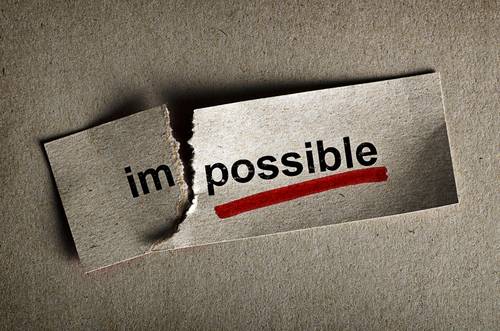“A person’s success in life can usually be measured by the number of uncomfortable conversations he or she is willing to have.” – Timothy Ferriss, “The 4 Hour Workweek”
Everyone’s heard of goal-setting. Most people know that a goal should be:
- Measureable. (I will weigh 140 pounds by October 6th.)
- Stated in the positive. (“I will get into my skinny jeans” instead of “I will get rid of my big butt.”)
- Attainable. (I will lose 2 pounds per week for 5 weeks.)
But I think the big question is: How big should your goal be?
Goals should be inspiring. The end result should get you so excited that it helps push you through those tough times when you’d like to skip a workout, eat a cupcake or avoid a conversation you KNOW you should have. Most of my clients come to me about weight loss, but there is nothing inspiring about losing ten pounds. However, “I have to lose ten pounds by the class reunion next month” puts a fire under your ass that you wouldn’t have otherwise.
When I first speak to my clients about goals, typically we talk in terms of vanity. Most people want to look better first and foremost. There are plenty of tricks for that: get a spray tan if your skin is pasty, whiten your teeth if you can’t live without coffee, get shape wear, wear black, photoshop. Ladies have MAC make-up and diva shoes. It’s pretty easy to look fabulous.
But then we realize it’s NOT just about looking good. It’s about feeling confident, getting rid of “computer neck” pain, carving out “me time” at the gym when your life over the past few years (or twenty) has been solely devoted to work and/or family. Perhaps there is family history of heart disease or diabetes. And doesn’t it seem like everyone is getting a little cancer these days?
Goal setting then becomes less about looking good and more about: Can life be better? Can I feel more youthful and energetic? Can I be stronger and faster than before? Can life be longer, healthier and more fulfilling? Some people are afraid or too busy to ask those big questions but I think they’re worth mentioning and contemplating.
So how does one pick a goal?
First I believe that we should pick at least two goals: one for the near future and one for the big picture. Immediacy sparks action and small successes build momentum toward a larger goal.
Let’s use my client Andrea as an example. As a busy 59-year-old mother and lawyer, her short-term goal was to eliminate hip and neck pain due to posture and muscle imbalances. Andrea was already very lean through excellent diet practices, but was lacking some strength and flexibility. She was also super stressed by a demanding work-load and as self-appointed task master at home.
When I asked her what her fitness goals were, she said, “Huh?”
 I suggested she try to train for her first triathlon – and she laughed in my face. A goal that big almost blew her mind, but it also excited her to a whole new level of enthusiasm in her training. Was is scary? Absolutely. Was it possible and inspiring? You betcha. This was our big goal for the big picture.
I suggested she try to train for her first triathlon – and she laughed in my face. A goal that big almost blew her mind, but it also excited her to a whole new level of enthusiasm in her training. Was is scary? Absolutely. Was it possible and inspiring? You betcha. This was our big goal for the big picture.
We worked on making her faster, stronger and more flexible by ten-percent increments on one or all counts. This gave us small goals for the near future. Andrea got an app for her phone to train on the treadmill. She hired a swim coach for a couple sessions to help her stroke get more efficient. She took time for herself and made her training a priority. For several weeks, she was so focused on triathlon training that she didn’t notice her pain had disappeared. And several months later, you can see Andrea crossing the finish line in this two-minute video:
So, ask yourself – is your long-term goal a little scary? Do you feel butterflies when you think about it? Do you have smaller more attainable goals along that journey you can celebrate? Have you felt inspired lately?
Like Tim says, life gets better when you’re willing to have those tough conversations – and sometimes the most important conversations are with yourself.
Photos courtesy of Shutterstock.






